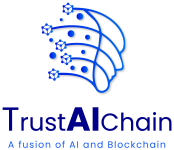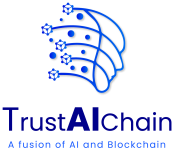What is Algorithmic Bias?
Algorithmic bias refers to systematic and repeatable errors in a computer system that create unfair outcomes, often disadvantaging specific groups based on race, gender, age, disability, or socioeconomic status. These biases are not constantly introduced by malicious intent; they often emerge from:
- Biased data (historical or societal)
- Flawed assumptions during model training
- Incomplete representation in datasets
- Lack of ethical oversight or diverse design teams
Examples of AI Discrimination in Everyday Life
Let us explore some striking real-world cases that show how invisible yet impactful they are. AI bias can be:
- Hiring Platforms: Amazon’s now-abandoned AI recruiting tool was found to downgrade resumes that included the word “women’s”, such as “women’s chess club captain,” and gave lower scores to candidates from all-women colleges. Why? The system had been trained on resumes submitted mainly by men, mirroring past hiring patterns.
❗ Impact: Reinforced gender inequality in tech hiring, undermining diversity initiatives.
- Healthcare Algorithms:A widely used AI tool in the U.S. healthcare system, used to predict which patients needed extra care, was shown to underestimate the health needs of Black patients systematically. The algorithm relied on healthcare spending as a proxy for need. Still, historical disparities meant Black patients had spent less on care, not because they were healthier, but because of systemic barriers to access.
❗ Impact: Black patients were less likely to receive preventative care, worsening health inequities.
- Credit Scoring & Loan Approvals:Credit scoring models and FinTech platforms often use proxy variables (e.g., ZIP code, education level, job title) to determine creditworthiness. These proxies can inadvertently correlate with race or economic background, leading to discriminatory lending decisions.
❗ Impact: Applicants from marginalized communities may receive higher interest rates or outright denials.
- Facial Recognition & Surveillance:Facial recognition systems used by law enforcement have demonstrated higher error rates for people with darker skin, particularly Black women. A landmark MIT study showed some systems had error rates of up to 34% for dark-skinned women, compared to 1% for lighter-skinned men.
❗ Impact: Misidentifications can lead to wrongful arrests, reinforcing distrust in law enforcement.

Where Does Bias Come From?
Bias in AI is often inherited by society. Algorithms learn from data, and data reflects our past behavior, including prejudice, exclusion, and inequality. Here are the familiar sources:
- Historical Data Bias:An AI model trained on past hiring, arrest, or loan approval data may encode existing discriminatory practices as “patterns.”
- Labeling Bias:The humans labeling data might unconsciously inject bias. For example, if crowdworkers label tweets as “angry,” their interpretation may differ based on the author’s perceived identity.
- Representation Bias:Datasets that underrepresent minorities, people with disabilities, or women may lead to poor performance for those groups.
- Deployment Bias:Even well-trained AI models can cause harm when misapplied or oversimplified in real-world settings, such as using AI for high-stakes decisions without human oversight.
Why Invisible AI Bias Is Dangerous
The harm caused by biased AI isn’t just theoretical; it translates into real-world consequences for millions. And because AI is often seen as neutral and objective, the damage may go unchecked or legally reinforced.
- Scale: Algorithms operate at enormous scale, meaning biased decisions can affect thousands instantly.
- Opacity: Many AI models are black boxes, making identifying or challenging unfair outcomes difficult.
- Trust erosion: When AI systems make discriminatory decisions, trust in technology and institutions suffers.

How Do We Fix It?
Solving AI bias isn’t simple, but it is possible with a multi-stakeholder, human-centered approach. Here are key strategies:
- Diverse Teams:Include data scientists, ethicists, lawyers, social scientists, and representatives from impacted communities in the development process.
- Bias Auditing Tools:Use open-source tools like:
- IBM AI Fairness 360
- Microsoft Fairlearn
- Google What-If Tool
- Explainable AI (XAI):Use techniques like SHAP or LIME to ensure decision logic is interpretable and challengeable, especially in high-stakes contexts (e.g., healthcare, finance).
- Ethical AI Frameworks:Adopt recognized frameworks such as:
- OECD AI Principles
- NIST AI Risk Management Framework
- EU AI Act requirements (e.g., human oversight, transparency, risk classification)
- AI Literacy for All:Equip the public with tools to question AI decisions, understand their rights, and demand accountability.
As AI systems become more pervasive, the responsibility to design them ethically becomes more urgent. We are not just building software, we’re shaping society. AI systems should enhance human dignity, not replicate discrimination in digital form.
“Technology is not neutral; it reflects the values of its creators. Let’s choose equity, accountability, and transparency.”
Building AI That Works for Everyone!
Bias in AI isn’t just a technical flaw; it is a societal risk. But we can turn AI into a force for good by acknowledging the problem, investing in inclusive design, and holding developers and companies accountable. Let’s demand algorithms that are not just smart, but also just.
What You and I Can Do
- Share this post to spread awareness.
- Ask your company: How do we audit our AI systems?
- Advocate for inclusive AI education in your workplace or community.







